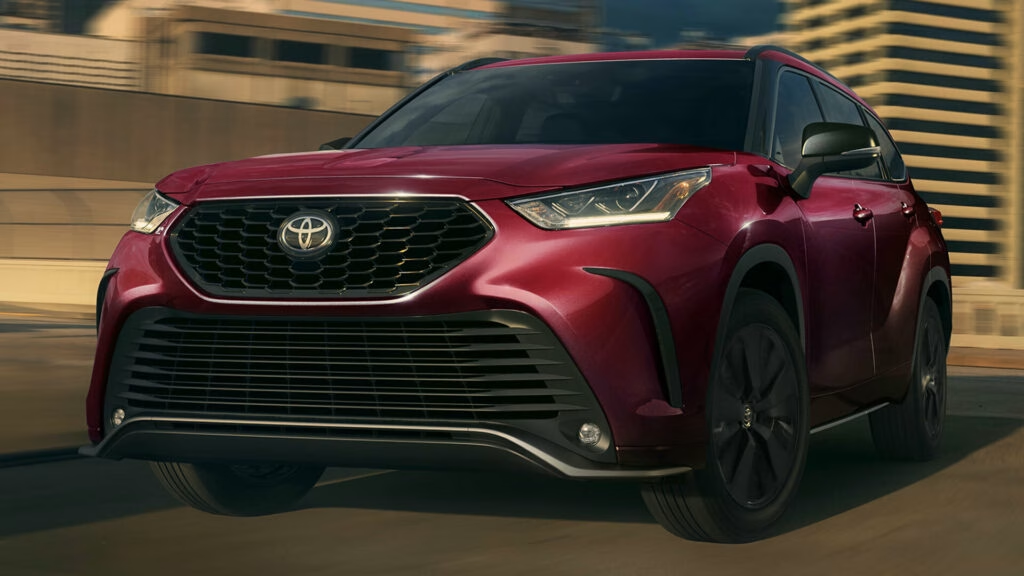Why Did Toyota Raise the 2026 Highlander’s Price So Much?
If you’ve been eyeing the Toyota Highlander, you might’ve done a double take at the latest numbers. The 2026 Highlander now starts at $45,270—a jump of nearly $5,000 over last year’s base model. That’s not just sticker shock; it’s a strategic shift. Toyota has dropped the entry-level LE trim and made all-wheel drive standard across the board. The result? The Highlander is now positioned as a more premium, all-weather family hauler.
This move comes as Highlander sales have slumped almost 50% year-over-year, according to recent industry data. By trimming the lineup and adding standard features, Toyota seems to be betting on buyers who want more tech and capability, not just the lowest possible price. But here’s the twist: the Highlander now costs more than the larger Grand Highlander, which starts at $41,360. Even the Grand Highlander XLE AWD is only $460 more than the Highlander XLE AWD. It’s a head-scratcher, and some might say Toyota is nudging buyers toward the bigger sibling.
What Trims and Features Are Now Available?
With the LE gone, the Highlander lineup is leaner but better equipped. Here’s how it breaks down for 2026:
– XLE AWD: $45,270
– XSE AWD: $47,340
– Limited AWD: $49,725
– Platinum AWD: $52,925
– Hybrid XLE AWD: $47,020
– Hybrid Limited AWD: $51,475
– Hybrid Platinum AWD: $54,675
All prices exclude a $1,495 destination fee. The Hybrid XLE Nightshade and Limited 25th Edition are also out, so what you see is what you get. Every trim now comes with all-wheel drive, which used to be a pricey option. For families in snowy climates, that’s a win. For bargain hunters, not so much.
How Do the Powertrains Stack Up?
Toyota hasn’t tinkered with the Highlander’s engines for 2026. You’ll still find two familiar options:
– Turbocharged 2.4-liter four-cylinder: 265 horsepower, 310 lb-ft of torque, paired with an eight-speed automatic. Fuel economy checks in at 21 mpg city, 28 mpg highway, and 24 mpg combined (EPA estimates).
– Hybrid 2.5-liter four-cylinder: 243 combined horsepower, using a nickel-metal hydride battery and a rear-mounted electric motor. Expect up to 35 mpg in city, highway, and combined driving.
These numbers put the Highlander right in the sweet spot for family SUVs. The hybrid’s efficiency is especially appealing as gas prices remain unpredictable. For comparison, the Ford Explorer Hybrid only manages 27 mpg combined, according to EPA data, so Toyota’s system still leads the pack for three-row crossovers.
Why Is the Highlander Now More Expensive Than the Grand Highlander?
It’s not often you see a smaller vehicle cost more than its larger sibling, but that’s exactly what’s happening here. The Grand Highlander, with its extra space and similar tech, starts at $41,360—over $4,000 less than the base Highlander. Even when you add all-wheel drive to the Grand Highlander, the price is still lower than the Highlander’s new entry point.
So what’s Toyota’s play? Some industry analysts suggest this is a classic case of product repositioning. By making the Highlander more premium, Toyota can push value-conscious shoppers toward the Grand Highlander while keeping the original Highlander as a higher-end, feature-rich alternative. It’s a bold move, and only time will tell if buyers bite.
Is the 2026 Highlander Still a Good Value?
Let’s be real: $45,000 is a lot for a midsize SUV, especially when the competition is fierce. The Honda Pilot, for example, starts at $38,080, and the Kia Telluride comes in at $36,190 for 2024 models. Both offer three rows and plenty of features. But the Highlander does bring a reputation for reliability, strong resale value, and that hybrid option, which remains rare in this segment.
For families who want all-wheel drive and are willing to pay for Toyota’s proven track record, the Highlander still makes sense. But if you’re looking for maximum space per dollar, the Grand Highlander or a rival might be the smarter pick.
What Should Buyers Consider Before Choosing the 2026 Highlander?
If you’re shopping in this segment, ask yourself a few key questions:
– Do you really need all-wheel drive? If not, you might find better value elsewhere.
– Is fuel economy a top priority? The Highlander Hybrid is hard to beat.
– How much space do you need? The Grand Highlander offers more room for less money.
– Are you loyal to Toyota’s brand and reliability? That peace of mind is worth something, especially for long-term owners.
The big takeaway? Shopping for a family SUV isn’t about perfection—it’s about smarter adjustments. Start with one change this week—maybe test drive both Highlander models, or compare the hybrid to a rival—and you’ll likely spot the difference by month’s end.

